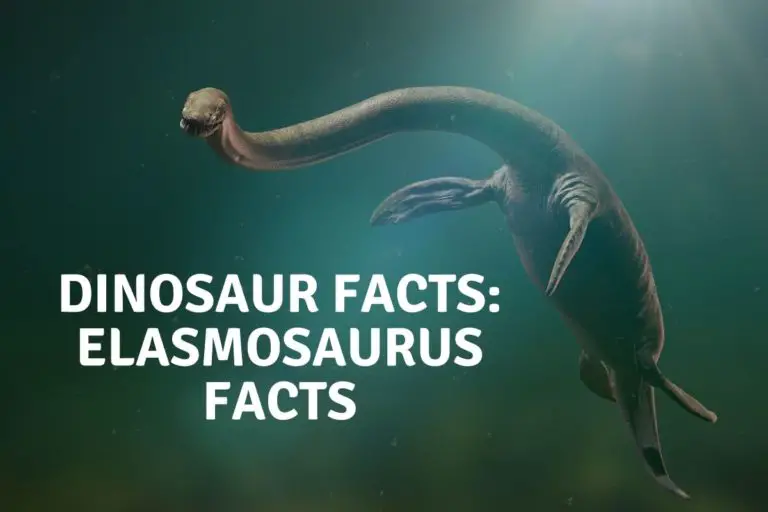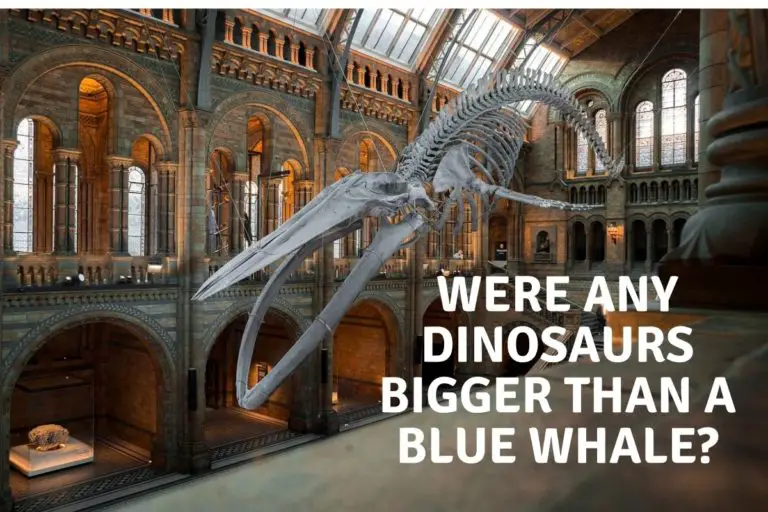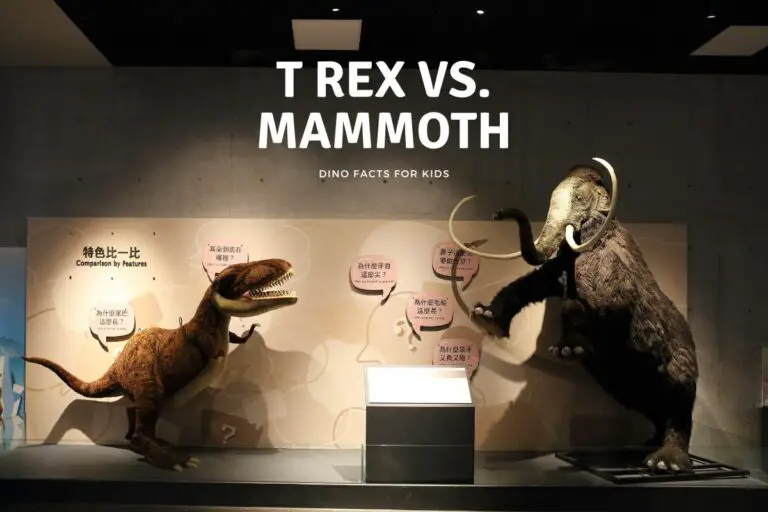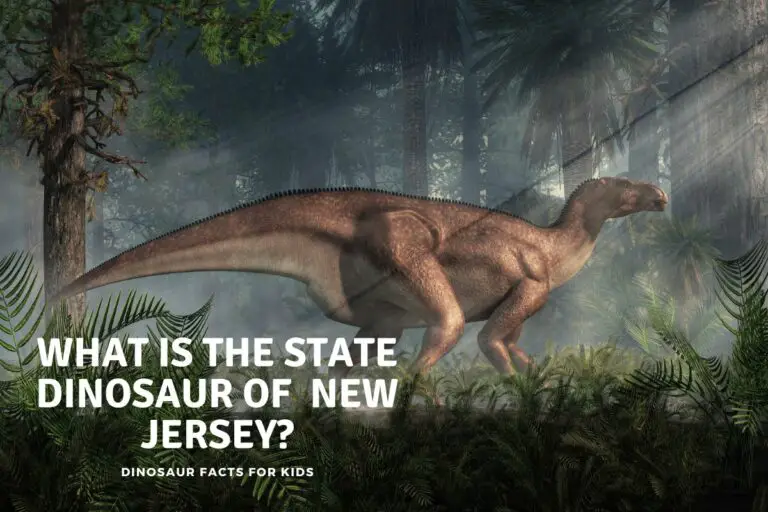How Much Did Velociraptor Eat?
The Velociraptor, often sensationalized in film and literature has, since 1993 at least, become one of the most popular and famous dinosaurs. With a swift, agile build and sharp claws, this predator was perfectly evolved to hunt. However its environment was not the most populated with prey, so we ask the question, how much did velociraptor eat?
Velociraptors, carnivorous dinosaurs of the Late Cretaceous period, consumed around 1-2 pounds of meat daily. This intake comprised smaller vertebrates, possibly including reptiles and early mammals. To visualize, that’s akin to eating 10-20 chicken drumsticks or the daily diets of 8-20 small birds.
So while at first glance its appetite seems small, we have to remember it was not the 6 feet tall killing machine we saw in the movies, much smaller means it had a smaller appetite but as we discuss below still larger than could be expected for its size.
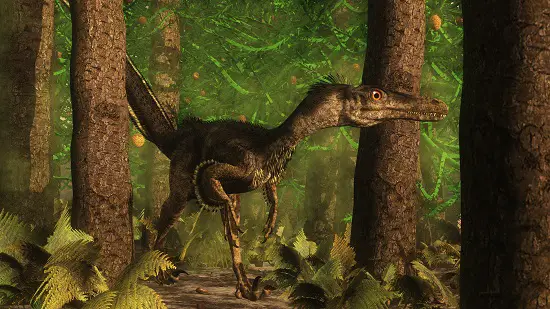
Physical Characteristics and Size (150 words)
When we think of Velociraptors, many of us might be influenced by their Hollywood portrayal — large and menacing with a “fox in the henhouse” attitude when it came to humans!
In reality, they were much smaller. Velociraptors stood at about 1.6 feet tall at the hip and measured around 6.8 feet in length. Weighing in at approximately 33 pounds, they had a light, agile build that aided their predatory lifestyle.
Their most distinguishable feature was a large, sickle-shaped claw on each foot. ( we actually have a replica of these) Their bodies were possibly feathered, drawing a close link to modern birds.
These physical attributes not only determined their hunting methods but also their dietary needs.
The Prehistoric Environment (150 words)
The Velociraptor lived during the Late Cretaceous period, about 75-71 million years ago. They roamed parts of what is now Mongolia and China.
This environment was arid and semi-desert-like, scattered with small water sources, which influenced the animals that lived there. Vegetation was sparse, consisting primarily of ferns, shrubs, and some trees.
The terrain and climate affected the Velociraptor’s diet, offering them a range of smaller vertebrates to prey on, including proto-mammals, lizards, and smaller dinosaurs.
Adapting to this environment, Velociraptors became versatile hunters, potentially hunting in packs.
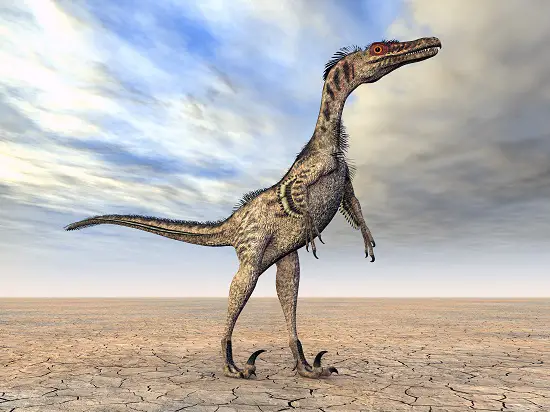
How Much Did the Velociraptor Eat?
The Velociraptor was a smaller dinosaur, especially when compared to behemoths like the T-Rex or Brachiosaurus that we have covered the eating habits of here on the site.
Averaging about 6.8 feet in length and weighing around 33 pounds, they weren’t the massive predators some might imagine from blockbuster films like the Jurassic Park franchise.
Being a carnivore, velociraptor, ate smaller vertebrates and possibly scavenged when opportunities arose – which is desert like conditions they certainly did.
It’s estimated that a Velociraptor would consume around 1-2 pounds of meat daily. While this might seem meager compared to the vast intakes of larger dinosaurs, it was substantial given their body size.
Their hunting prowess was helped by a keen sense of sight, agile build, and sharp claws, which made them efficient at capturing prey.
Fossils indicate they might have hunted in packs, further increasing their chances of obtaining enough food.
Their diet was likely varied, giving them flexibility in a world full of larger predators and competition and we look at what velociraptors may have eaten in the next section.
What Velociraptor’s ate: Comparison Table
| Item | Amount Equivalent to Velociraptor’s Daily Intake | Explanation Notes |
|---|---|---|
| Chicken Drumsticks | About 10-20 | Approximating an average drumstick at 0.1 pounds each. |
| Mice | 20-40 | An average mouse weighs about 0.045 pounds. |
| Sparrows | 8-18 | Using the weight of an average sparrow (around 0.1 pounds). |
| Steak (Beef) | 1-2 large steaks | Estimating an average steak at about 1 pound. |
| Modern Small Birds’ Daily Intake | Equivalent to 10-20 small birds’ diets | Modern small birds like sparrows consume around 10% of their weight daily. |
What Did Velociraptor Eat?
The Velociraptor was a carnivorous predator, mostly but not solely feeding on the smaller inhabitants of its environment.
Fossil evidence, particularly the famed discovery of a Velociraptor locked in combat with a Protoceratops, (called fighting dinosaurs) provides direct insights into its dietary choices.
This petite predator would have dined on small vertebrates including lizards, early mammals, and even smaller dinosaurs.
It’s also believed that Velociraptors, like many predators, were opportunistic and wouldn’t shy away from scavenging, taking advantage of any available meals and Prehistoric Planet shows a Tarbosaurus trying to stop a group of velociraptors from doing jsut this. .
The variety in its diet was not just a matter of preference, but a necessity, especially in a semi arid area like Mongolia and China during the Late Cretaceous period.
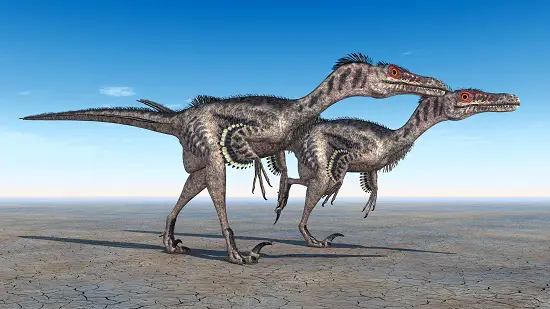
Comparison with Modern Animals
Though often depicted as a massive predator in movies, the Velociraptor was closer in size to a turkey than to its gigantic cousins like T-Rex.
Modern-day comparisons could place them with birds of prey, like hawks or eagles, in terms of hunting style and diet.
However, unlike these birds, Velociraptors were grounded and could not fly – much to the relief of many a dinosaur we think!, relying on their speed and pack tactics.
In terms of feeding habits, they could be compared to hyenas—opportunistic predators that both hunt and scavenge.
This mix of hunting ability and adaptability has ensured the survival of many species, from the ancient Velociraptor to present-day predators.
Why So Much Food for a Small Dinosaur?
For its size, the Velociraptor had a fairly substantial appetite, consuming around 1- 2 pounds of meat daily. This intake was vital for multiple reasons:
- High Metabolic Rate: Just like modern birds, Velociraptors may have had a higher metabolic rate compared to other animals. A faster metabolism demands more energy and, thus, more food.
- Active Lifestyle: Being a hunter required bursts of speed and energy. Chasing prey, fighting off competition, or scavenging demanded a diet that supported such an active lifestyle.
- Growth: While they weren’t the largest dinosaurs, they still needed a consistent diet to support growth, especially during their juvenile stages.
- Environmental Competition: The Cretaceous period was filled with various predators. To stay ahead, or at least survive, Velociraptors needed strength and agility, both of which depended on a nutritious and consistent diet.
Their daily food intake might seem extravagant for a dinosaur of its size, but it was a necessary aspect of their survival strategy in a competitive both due to other predators and its climate, prehistoric environment.
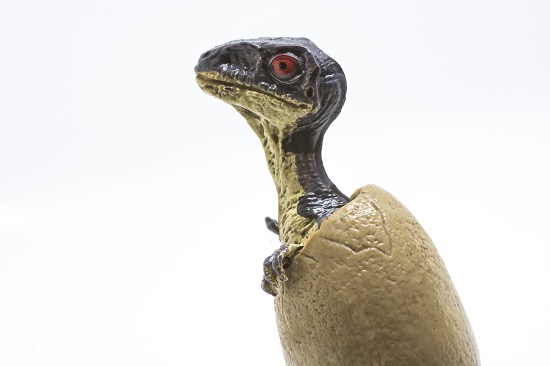
Velociraptor’s Role in the Ecosystem
The Velociraptor wasn’t the top predator in its ecosystem, that was likely Tarbosaurus, but it played a crucial role in maintaining balance.
As an intermediate predator, it helped control populations of smaller animals and ensured their numbers didn’t explode unchecked.
By preying on a wide range of creatures, they helped with biodiversity by preventing any one species from dominating.
Additionally, by scavenging, Velociraptors ensured that dead animals were recycled back into the ecosystem,
Their existence also provided food for larger predators, if they could catch them of course,
Want to know how much other dinosaurs ate – we many eating habits of dinosaurs covered below.
- How much did a Triceratops eat?
- how much did a T-rex eat?
- How much did a Brachiosaurus eat?
- how much did Velociraptor eat?
- How much did Spinosaurus Eat?
- How much did Stegosaurus eat?
Conclusion
The Velociraptor, while small in the world of dinosaurs, was a successful and essential part of its environment – Smart, equipped with serious claws and teeth, probably living and hunting in packs and as the name suggests fast.
Consuming about 2 pounds of meat daily, this carnivore thrived on a diet of smaller vertebrates, showcasing its adaptability in both hunting and scavenging.
It was unlikely a “killing machine” as it has been shown in movie, and very unlikely to take on a dinosaur the size of a T-Rex or Indominus rex but when faced with a pack of hungry velociraptors many smaller dinosaurs. lizards and mammals would and did meet their end.
References
- https://kids.nationalgeographic.com/animals/prehistoric/facts/velociraptor
- https://www.ducksters.com/animals/velociraptor.php
- https://www.kids-dinosaurs.com/velociraptors.html
- https://www.nhm.ac.uk/discover/velociraptor-facts.html
Hi, I am Roy Ford a General Studies and English Teacher who has taught all over the world. What started as a fossil collection became a great way to teach, motivate and inspire students of all ages and all over the world about dinosaurs and from that and children’s love of dinosaurs came the site dinosaur facts for kids, a resource for all ages.

